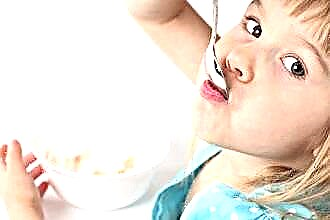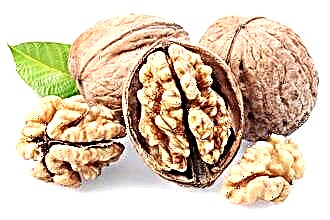Angina is one of the infectious diseases characterized by severe intoxication of the body. The metabolites of pathogenic viruses and bacteria are neutralized in the detoxification organs, which creates an additional burden on the liver. To speed up the healing process, a special nutritional strategy should be followed throughout the treatment period. Rational nutrition with angina helps to detoxify the body and increase local immunity. Adhering to diet therapy, you can reduce the likelihood of local complications associated with mechanical damage to the hyperemic tissues of the pharynx. Ignoring the rules of nutrition leads to the appearance of intestinal syndrome, accompanied by abdominal pain, diarrhea, flatulence, etc.
General rules
 Tonsillitis is an acute infectious disease in which mainly the soft tissues of the oropharynx are affected: the palatine and pharyngeal tonsils, the mucous membrane of the throat and the palatine arches. Inflammatory processes in the ciliated epithelium provoke tissue edema, as a result of which their morphology changes.
Tonsillitis is an acute infectious disease in which mainly the soft tissues of the oropharynx are affected: the palatine and pharyngeal tonsils, the mucous membrane of the throat and the palatine arches. Inflammatory processes in the ciliated epithelium provoke tissue edema, as a result of which their morphology changes.
Eating solid food can cause mechanical damage to the mucous membranes, which will provoke discomfort and pain. Intoxication of the child's body often leads to disturbances in the functioning of the gastrointestinal tract, as evidenced by nausea, vomiting, diarrhea, etc.
To alleviate the course of the disease, it is necessary to include foods that are easily digestible and soft in consistency in the diet. When drawing up a menu, a nursing person should take into account the following factors:
- products must be hypoallergenic;
- in the absence of appetite, you can not force the child to eat;
- the patient needs to provide plenty of drink (about 1.5 l / day);
- if you have a good appetite, you should reduce the portion size;
- there should be at least 3 and no more than 5 meals a day;
- do not include exotic vegetables and fruits in the diet.
Important! It is undesirable to give children products that contain dyes, flavors and emulsifiers.
During an exacerbation of a bacterial infection, confectionery should be excluded from the menu. Sweets contain too much sugar and fructose, which is an ideal substrate for pathogens to thrive.
Nutrition in the early days
In the first few days after infection, patients are diagnosed with hyperthermia, which is due to severe intoxication of the body. For this reason, children have no appetite. Subfebrile fever is often accompanied by sweating, which can lead to dehydration. Lack of fluid in the body contributes to an increase in the concentration of toxic substances in the blood, which inevitably leads to a deterioration in well-being.
Drinking plenty of fluids will help speed up the process of removing toxic substances from tissues.

The patient's diet can include:
- mineral water (without gas);
- carrot broth;
- fruit juices;
- green tea;
- meat broth.
Important! It is undesirable to drink coffee with tonsillitis, so as not to create additional stress on the cardiovascular system.
Diet therapy should have a general strengthening, bacteriostatic and immunostimulating effect on the body. Thyme, ginger, honey and lemon, which can be added to warm drinks, have pronounced therapeutic properties.
Table number 13 according to Pevzner
Table 13 - a special nutritional strategy that has been developed for patients suffering from infectious diseases. Diet therapy can help relieve the symptoms of acute tonsillitis and speed up the healing process. It solves several problems at once:
- promotes detoxification of the body;
- activates the immune system;
- minimizes stress on the digestive tract and detoxification organs.
 The dietary program was developed by the therapist and nutritionist I.M. Pevzner in the 1840s. The current physician and scientist conducted numerous studies on the effects of food on sensitization processes. He compiled individual nutritional systems for people suffering from various pathologies. During the treatment of acute infectious diseases, the doctor recommends adhering to diet (table) No. 13, which has a beneficial effect on the immune system and minimizes the risks of developing local and systemic complications.
The dietary program was developed by the therapist and nutritionist I.M. Pevzner in the 1840s. The current physician and scientist conducted numerous studies on the effects of food on sensitization processes. He compiled individual nutritional systems for people suffering from various pathologies. During the treatment of acute infectious diseases, the doctor recommends adhering to diet (table) No. 13, which has a beneficial effect on the immune system and minimizes the risks of developing local and systemic complications.
Characteristics of the table No. 13
Table 13 - a therapeutic diet of low calorie content, which is based on foods with a high content of easily digestible proteins, carbohydrates and fats. A diet for angina involves the use of a varied set of products, which contains the maximum amount of vitamins and minerals. When compiling a menu, the following foods can be included in the child's daily diet:
- fish and meat - boiled or steamed lean meat (skinless);
- dairy products - natural yogurt, hard cheese, low-fat kefir, cottage cheese;
- porridge - semi-liquid and well-boiled rice, noodles, semolina and oatmeal;
- fats - no more than 10 g / day of butter and olive oil;
- vegetables - mashed broccoli, cauliflower, carrots, beets, zucchini, eggplant;
- fruits - ripe sweet and sour berries, citrus fruits, bananas, kiwi, etc.;
- eggs - fried omelets, soft-boiled eggs.
Important! You can not use spices and spices so as not to create even greater irritation of the mucous membrane.
After each meal, it is advisable to rinse with saline solutions with a small addition of iodine. Disinfection of the oropharynx contributes to the destruction of pathogens in the foci of inflammation, thereby accelerating the regression of pathological processes.
Prohibited foods
Feeding children with fatty, spicy and acidic foods leads to disturbances in the digestive system. To alleviate the course of the disease, it is undesirable to include in the daily diet those foods that contain coarse fiber, fats and complex carbohydrates. Rich broths cooked on fatty meat prevent the absorption of vitamins and beneficial microelements. Their use inevitably leads to the appearance of intestinal syndrome, accompanied by nausea, gas and belching.

According to the recommendations set out in diet number 13, during the period of treatment of the infection from the diet should be excluded:
- fatty meat - pork, duck;
- muffins - rye and wheat bread;
- "Sour" vegetables - radish, garlic, cabbage;
- confectionery - cakes, biscuits, chocolate;
- porridge - pearl barley, barley, corn, wheat;
- semi-finished products - dumplings, canned fish, smoked sausages;
- dairy products - fat cottage cheese, cream, processed cheese, sour cream.
It is advisable to give the first courses and drinks only warm, not hot. Due to inflammation of the mucous throat, there is a risk of burns, which leads to a decrease in local immunity.
Sample menu
During cooking, all foods must be cooked to eliminate most opportunistic microorganisms. Angina helps to reduce the reactivity of the body, which can lead to the development of secondary fungal and bacterial infections. Candidal and bacterial tonsillitis can be complicated by meningitis, encephalitis, sinusitis, sepsis, etc.
In order to strengthen the immune system, during the period of exacerbation of the pathology, it is advisable to adhere to the basic rules of diet therapy.
A sample baby food menu might look like this:
 first breakfast: oatmeal with berries and jelly;
first breakfast: oatmeal with berries and jelly;- second breakfast: baked apples with honey;
- lunch: vegetable stew with a piece of boiled meat;
- afternoon snack: a glass of low-fat kefir (yogurt);
- dinner: vegetable cream soup and plum juice.
How to feed a child with angina - what should be the diet and nutrition for children? When drawing up a menu for preschool children, it is advisable to consult with a nutritionist and pediatrician. Due to the increased sensitization of the body, some foods can provoke allergic reactions.
Low allergy products
Diathesis is one of the main problems faced by nutritionists when drawing up a diet for children under the age of 5 years. Violations of physiological adaptation resulting from an inadequate response of the body to stimuli can cause serious complications. In order to minimize the risks of allergies, the degree of allergenicity of the products must be taken into account when compiling a therapeutic diet for young children.
Low-allergenic foods that can be consumed for tonsillitis include:
- boiled chicken;
- sea bass;
- Brussels sprouts;
- squash;
- white cherry;
- pear compote;
- natural yogurt;
- green salad;
- rosehip broth.
Foods with a high degree of allergenicity include: bell peppers, tomatoes, sea buckthorn, grapes, canned foods, red caviar, soda water, cocoa, etc. When the first symptoms of sore throat occur, they should be excluded from the diet for at least two weeks.

 first breakfast: oatmeal with berries and jelly;
first breakfast: oatmeal with berries and jelly;

